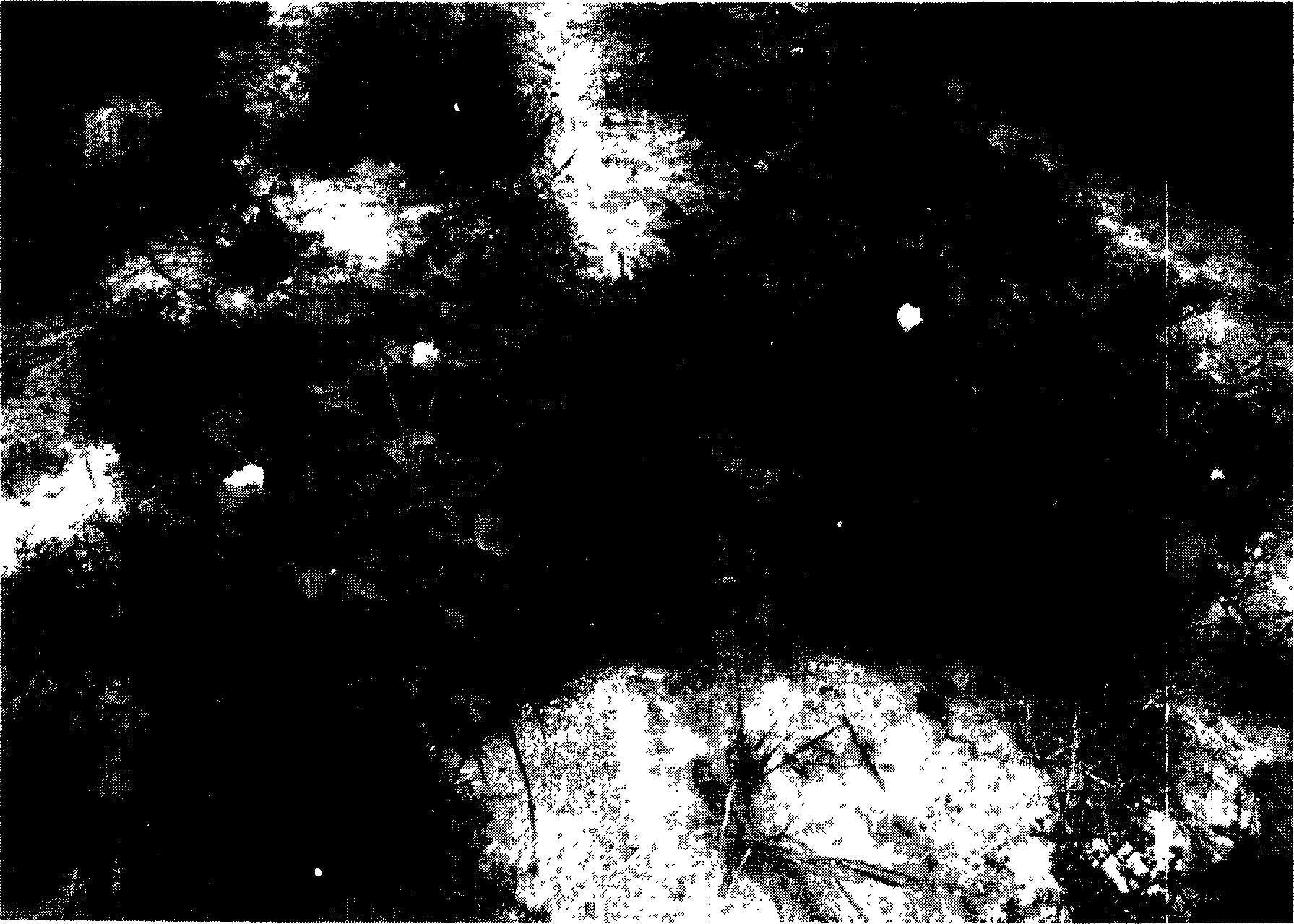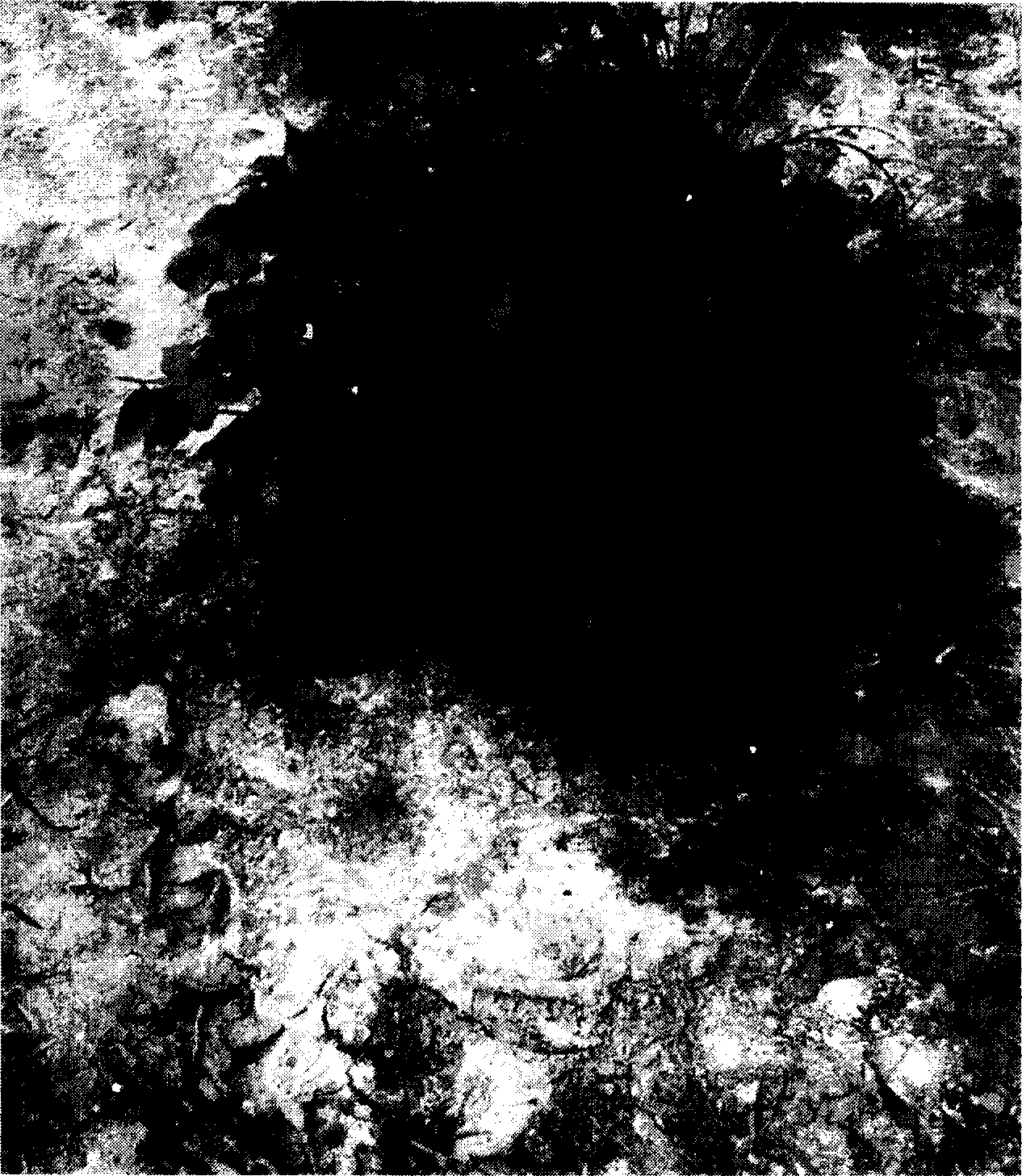APDHI sequence of DNA unwindase gene of kender and its clone and applciation thereof
A technology of DNA helicase and apocynum, applied in the field of molecular biology and biology, can solve the problems of low salt tolerance function and limited improvement of salt tolerance
- Summary
- Abstract
- Description
- Claims
- Application Information
AI Technical Summary
Problems solved by technology
Method used
Image
Examples
Embodiment 1
[0069] Embodiment 1: Cloning of Apocynum dna helicase gene APDH1
[0070] 1. The processing of Apocynum seedlings and the extraction of total RNA: the processing of Apocynum apocynum seedlings utilizing sand culture for 6 weeks was put into 800mM sodium chloride aqueous solution and distilled water for 2 days respectively, and RNA easy Plant mini Kit (Promoga company product) kit to extract total RNA from the leaves of Apocynum venetus seedlings treated with salt stress and treated with distilled water respectively.
[0071] 2. Construction and screening of suppression subtraction library: use Clontech SMART PCR cDNA synthesis kit to synthesize cDNA, treat seedling leaf cDNA with salt stress as tester, distilled water treated seedling leaf cDNA as driver, provide according to Clontech PCR-Select complementary DNA subtraction kit Apocynum salt stress inhibited subtractive cDNA library was constructed, and the positive cDNA clones screened from the subtractive library were diges...
Embodiment 2
[0074] Embodiment 2: the sequence of Apocynum DNA helicase gene APDH1 is as follows:
[0075] (1) Information of SEQ.ID.NO 1
[0076] (a) Sequential features
[0077] * Length: 1621 bp
[0078] *Type: nucleic acid
[0079] * Chain type: double chain
[0080] *Topology: Linear
[0081] (b) Molecular type: cDNA
[0082] (c) Assumption: No
[0083] (d) Antisense: no
[0084] (e) Original source: Apocynum
[0085] (f) Sequence description: SEQ.ID.NO 1
[0086] 1 attcttgtgc gaaaaccttt cttatccacc ttatctatat ctctccatcc tcaacattat
[0087] 61 agctcggtca acaagcatgg ccacaactac ttcggggccg gctaatcgta ggggaaccgt
[0088] 121 aatcgacgat aagctggtct ttgaaacgac cgaaggagtc gaggccatta cctccttcaa
[0089] 181 tggcatgggc ataaaagagg atttactccg tggtatctat gcttacggat tcgaaaagcc
[0090] 241 ttccgctata caacagcgag cggtaatgcc tatcatacag ggtcgagatg taattgcaca
[0091] 301 agctcaaagt ggtacgggta agaccagcat gattgccctt acagtatgcc aggtagttga
[0092] 361 tacttcggtg cgtgaagtcc aagcattaat ...
Embodiment 3
[0129] Embodiment 3: Construction and transformation of expression vector
[0130] 1. Gene isolation: according to the nucleotide sequence of the cloned Apocynum DNA helicase gene APDH1, design primers:
[0131] Forward primer: 5'-CCTTTCTTATCCACCTTATC-3'
[0132] Reverse primer: 5'-GCCAAAAACCCTAAACTATCAC-3'
[0133] The polymerase chain reaction was carried out using the cDNA reverse-transcribed from the total RNA of salt-stressed leaves as a template.
[0134] 2. Gene identification: Get 2 μl of PCR products and connect them with pGEM-T easy Vector. The method is carried out according to the instructions of Promega products. The connected products are transformed into DH5α bacteria (purchased from Shanghai Sangong Bioengineering Co., Ltd.), and the transformed bacteria contain ampicillin and / IPTG / -Gal LB solid medium culture, 37 ℃ inverted culture for 12-20 hours, some colonies are white, some turn blue. Select the white colony, extract the plasmid DNA, carry out enzyme d...
PUM
 Login to View More
Login to View More Abstract
Description
Claims
Application Information
 Login to View More
Login to View More - R&D
- Intellectual Property
- Life Sciences
- Materials
- Tech Scout
- Unparalleled Data Quality
- Higher Quality Content
- 60% Fewer Hallucinations
Browse by: Latest US Patents, China's latest patents, Technical Efficacy Thesaurus, Application Domain, Technology Topic, Popular Technical Reports.
© 2025 PatSnap. All rights reserved.Legal|Privacy policy|Modern Slavery Act Transparency Statement|Sitemap|About US| Contact US: help@patsnap.com



